E
Description of Drive Cycles Used for Compliance
A total of 11 vehicle drive cycles were used in the study. Each cycle is described in this section. The Northeast States Center for a Clean Air Future (NESCCAF) cycle was developed to represent a typical line-haul type of operation. There are brief urban/suburban sections at the beginning and end of the cycle, to represent getting out to the highway. The main portion of the cycle consists of five cruise segments at speeds of 65 to 70 mph. The second cruise segment has an alternating +/-1 percent grade, and the third segment has an alternating +/-3 percent grade. The NESCCAF cycle is the only cycle that includes grades. Because tractor-trailer trucks cannot normally maintain cruise speed on a 3 percent grade, the cycle was given a feature that extended the drive time to force the vehicle to complete the required distance. Figure E-1 shows the speed versus time trace, and Figure E-2 shows the grade versus time trace. This cycle was only used for tractor-trailer trucks.
Figure E-3 shows the World Harmonized Vehicle Cycle (WHVC). This cycle is intended for medium- and heavy-duty trucks and includes urban, suburban, and highway segments. The cycle assumes that a road speed governor is used to limit speed to about 53 mph, which is required in Europe. The WHVC was used for all vehicles, to provide a way to compare results across different vehicle types.
The Federal Test Procedure (FTP)-Highway cycle shown in Figure E-4 has been used for many years to evaluate light-duty vehicle fuel economy. This cycle was developed in the time of the 55 mph speed limit, so speeds are low compared to typical modern highway driving, and accelerations are gentle. This cycle was only used for the pickup truck.
The FTP-City cycle shown in Figure E-5 has been used for many years to evaluate light-duty vehicle fuel economy. The cycle uses relatively gentle accelerations compared to what is found in typical city driving, and idle time is less than would be expected in typical city driving. This cycle was only used for the pickup truck.
The California Air Resources Board (CARB) urban cycle shown in Figure E-6 is used in the Greenhouse Gas Emissions Model (GEM) for medium- and heavy-duty vehicles. This cycle simulates urban driving for trucks. The CARB cycle was used for all vehicles simulated, except the pickup truck.
The US06 cycle shown in Figure E-7 is a more aggressive drive cycle for light-duty vehicles. It was introduced to help compensate for the overly optimistic fuel economy values generated by the older FTP city and highway cycles. This cycle was only used for the pickup truck.
The SC03 cycle shown in Figure E-8 was developed to evaluate the effect of air conditioner use in hot conditions on fuel economy. In this study, the air conditioner was run on all drive cycles, which is not the standard approach. This cycle was used only with the pickup truck.
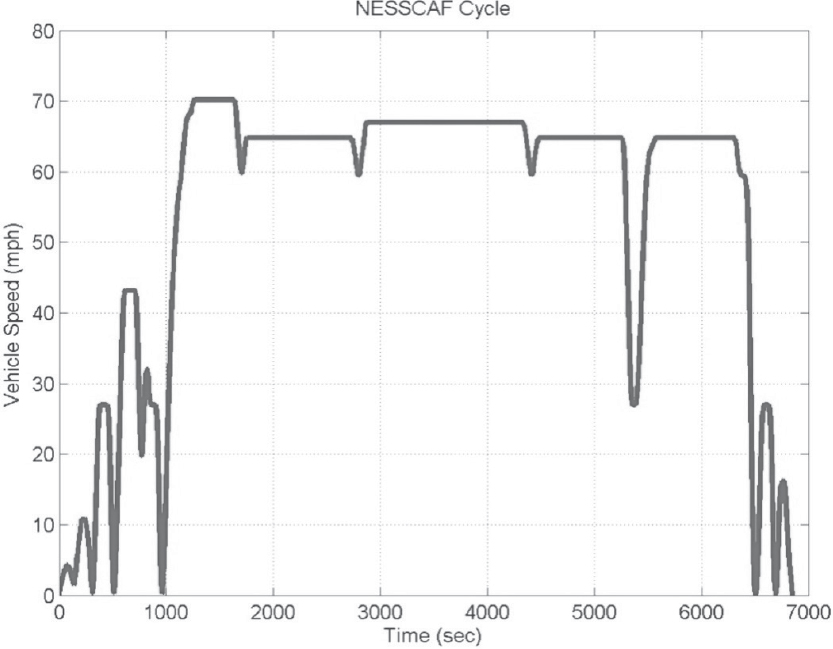
SOURCE: Reinhart (2015).
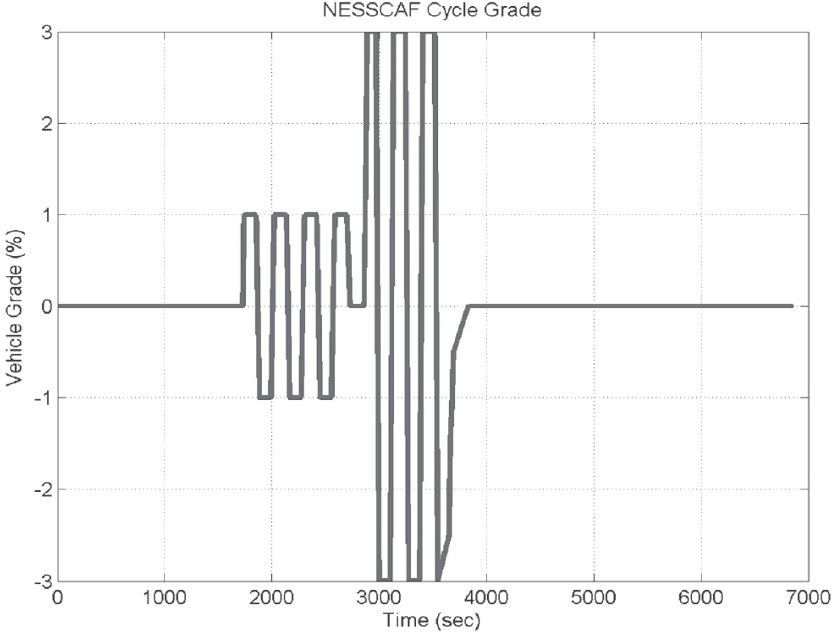
SOURCE: Reinhart (2015).
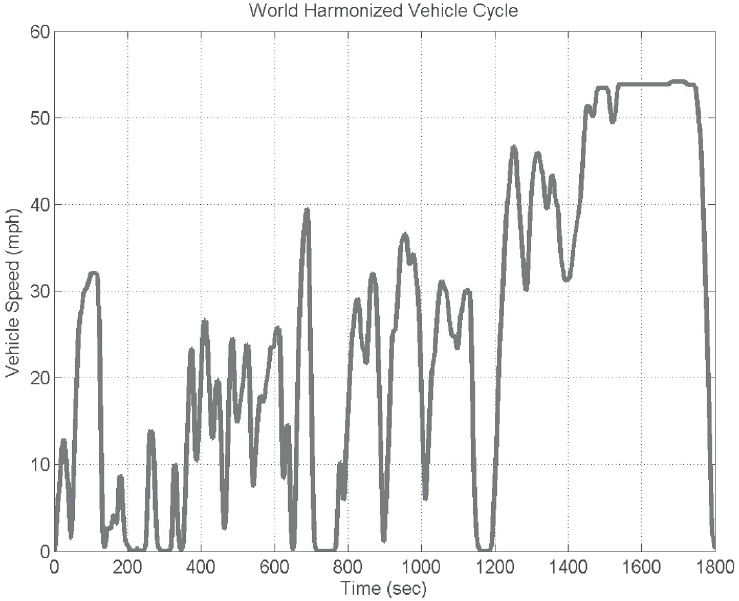
SOURCE: Reinhart (2015).
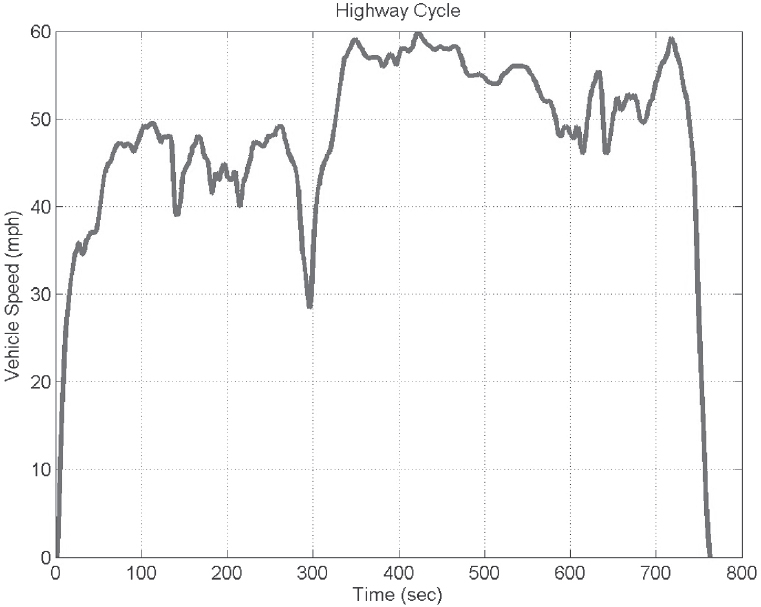
SOURCE: Reinhart (2015).
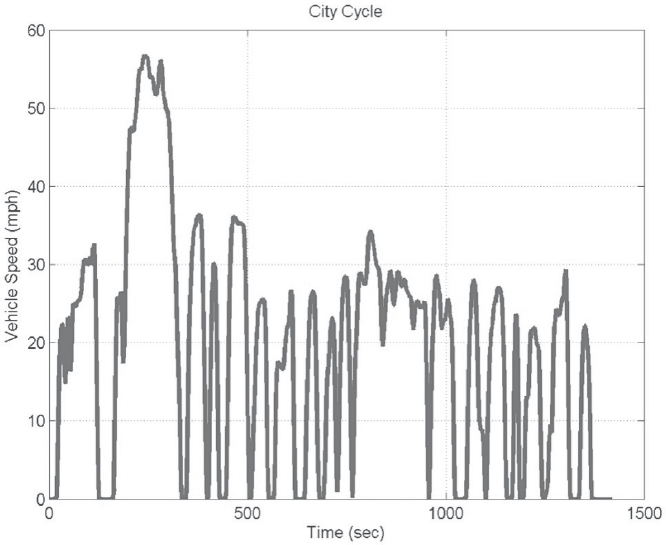
SOURCE: Reinhart (2015).
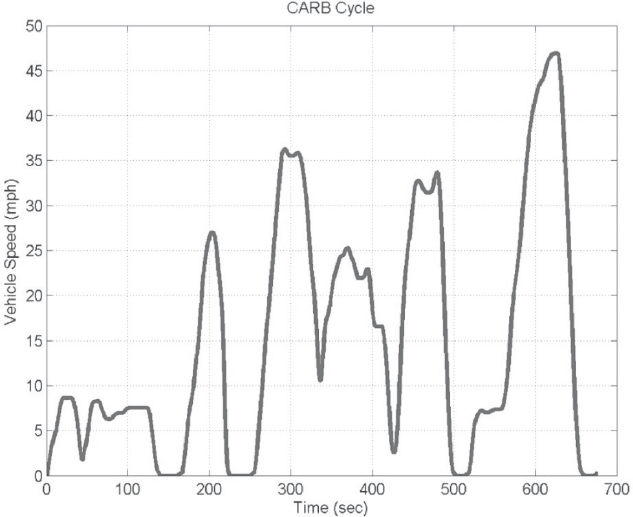
SOURCE: Reinhart (2015).
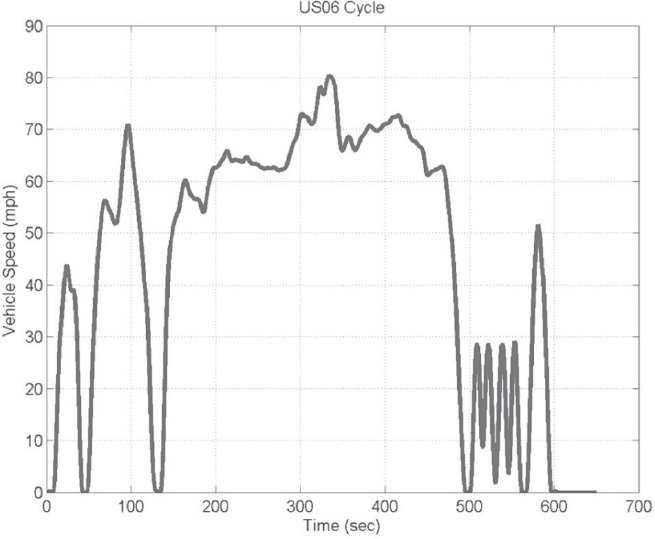
SOURCE: Reinhart (2015).

SOURCE: Reinhart (2015).
The Parcel cycle shown in Figure E-9 was developed to model the drive cycle of a parcel delivery truck. About 50 percent of the drive cycle time is at idle. This causes fuel consumption at idle to be significant, especially with an automatic, where the torque converter load is significant. The Parcel cycle was only used for the T270 and F-650 medium trucks.
The Combined International Local and Commuter Cycle (CILCC) shown in Figure E-10 was developed to simulate urban driving. The general approach, with steady, very gentle accelerations, steady speed operation, and then gradual deceleration, is similar to the New European Driving Cycle. This cycle results in very light loads on the engine, and the cycle appears to be designed to favor hybrid systems. The braking sequences are gentle enough that almost all kinetic energy can be recovered by dynamic braking. The CILCC was only used for the T270 and F-650 medium trucks.
There are two remaining drive cycles that were used: the 55 mph and 65 mph cruise cycles. These cycles are strictly steady state, with no grades or other changes in load, so they effectively only operate the engine at one speed/load point. These two cycles are part of the GEM vehicle certification model. The 65 mph cruise was used for all vehicles in the study, while the 55 mph cycle was used for all vehicles except the pickup truck.
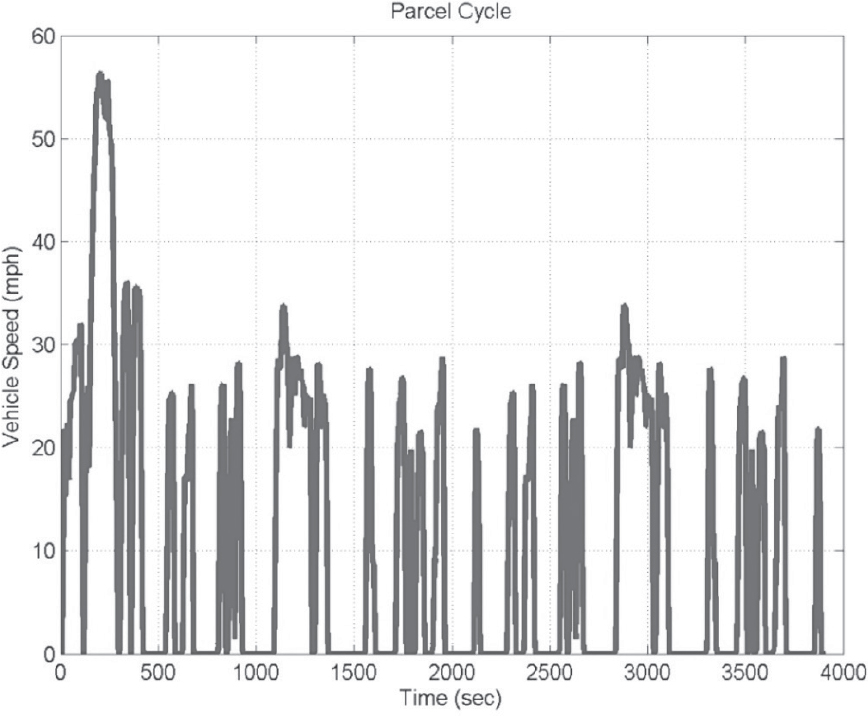
SOURCE: Reinhart (2015).
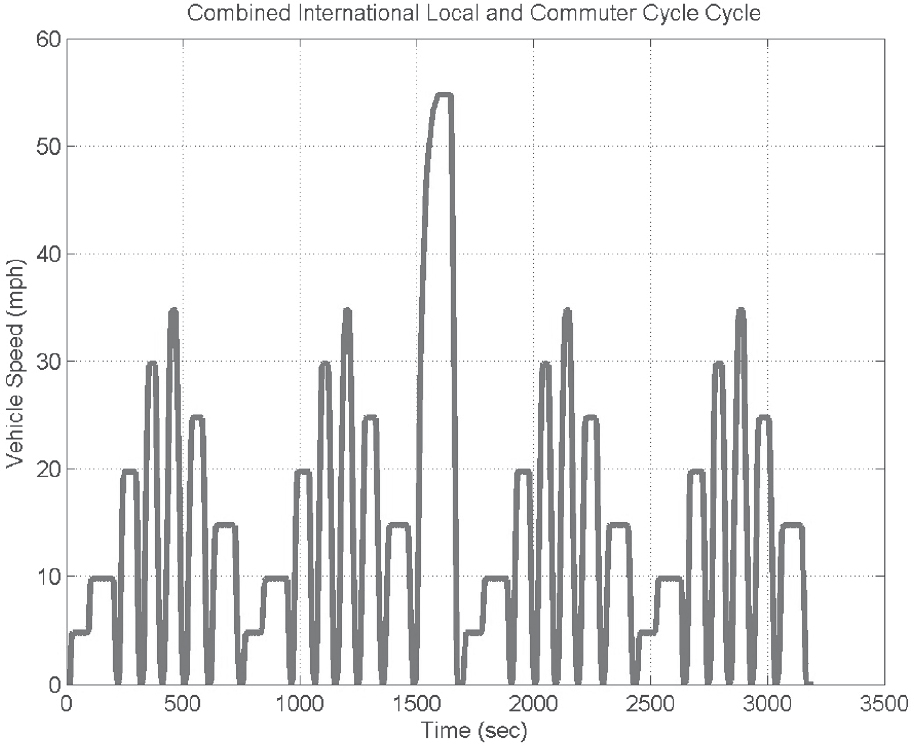
SOURCE: Reinhart (2015).
REFERENCE
Reinhart, T. 2015. Commercial Medium- and Heavy-Duty Truck Fuel Efficiency Technology Study—Report #1. Report No. DOT HS 812 146. Washington, DC: National Highway Traffic Safety Administration, June.







